In the world of electronics manufacturing, the quality of your Request for Quote (RFQ) directly impacts the accuracy of pricing, production timelines, and ultimately, your project’s success. A well-prepared RFQ package eliminates assumptions, reduces back-and-forth communications, and helps contract manufacturers provide precise quotes faster. Whether you’re sourcing a prototype run or planning high-volume production, this comprehensive checklist will ensure your PCBA RFQs contain all critical information manufacturers need to deliver accurate quotes without delays.
Why a Comprehensive RFQ Checklist Matters
When sourcing printed circuit board assembly services, the difference between a vague request and a detailed RFQ can mean weeks of delay and thousands in unexpected costs. Contract manufacturers rely on specific information to accurately price your project, schedule production time, and source components. Without these details, they must make assumptions or request clarifications, extending the quoting process and potentially leading to mismatched expectations.
A thorough RFQ checklist serves as your roadmap to faster quotes and smoother production. It helps you:
- Receive more accurate pricing without hidden costs
- Reduce time-consuming clarification cycles
- Enable apples-to-apples comparison between vendors
- Prevent production delays from missing specifications
- Build stronger relationships with manufacturing partners
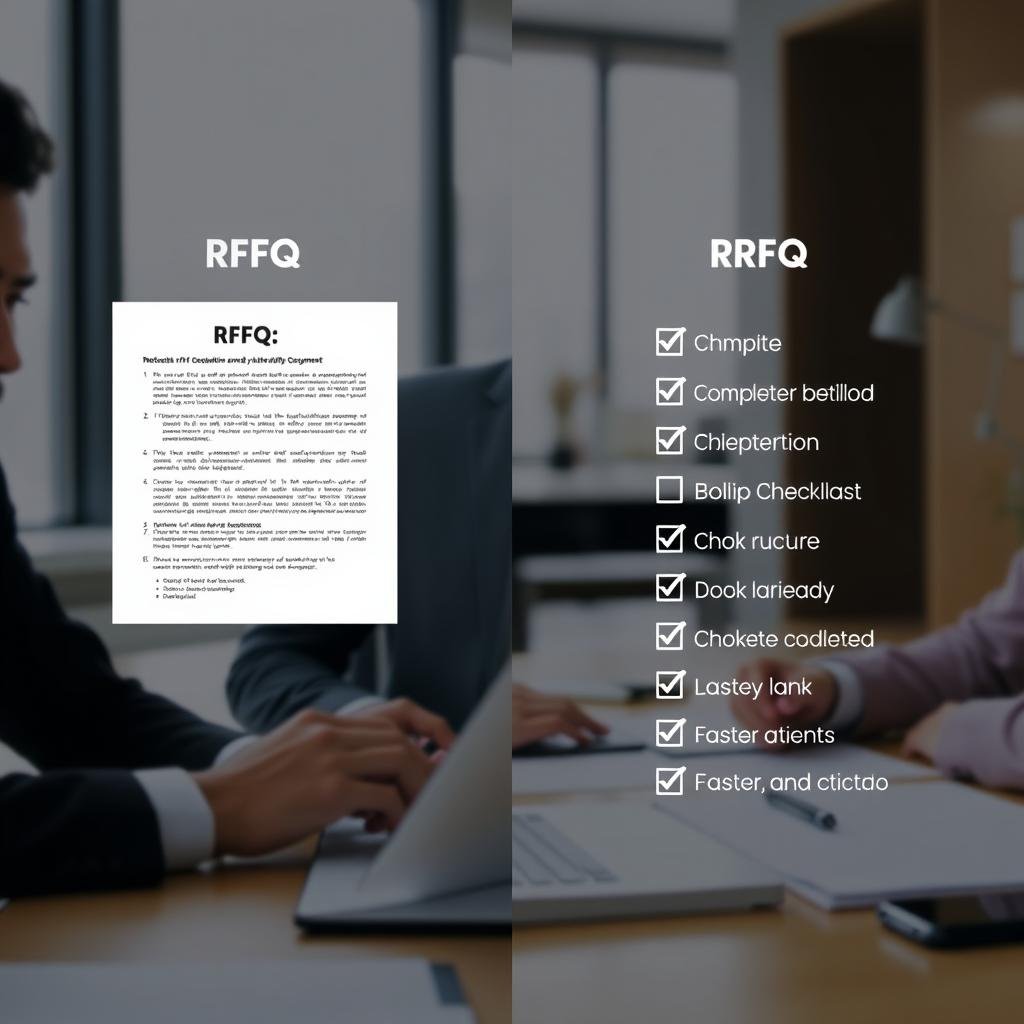
Industry Insight: According to electronics manufacturing experts, incomplete RFQs can extend quote turnaround times by 300% and lead to pricing variations of up to 25% from the final production cost.
Essential RFQ Checklist for PCBA Quotes
Use this comprehensive checklist to ensure your RFQ packages contain all the information contract manufacturers need to provide fast, accurate quotes for your PCBA projects.
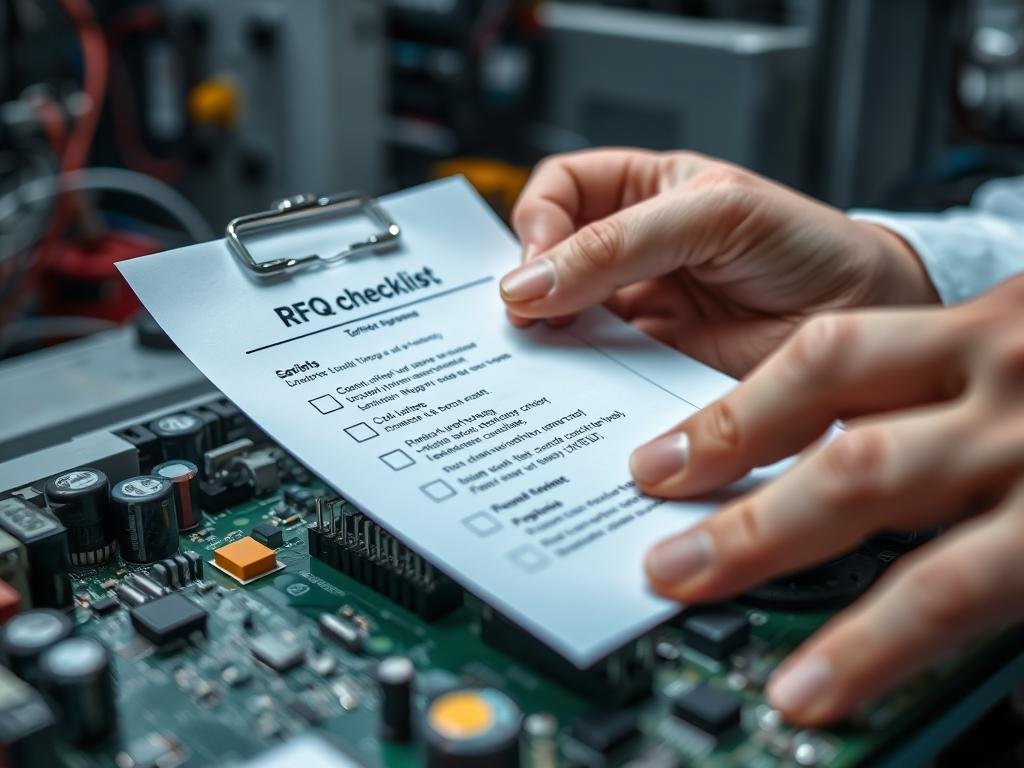
Design Documentation
| Checklist Item | Why It Matters |
| Complete Gerber files (RS-274X format) | Enables manufacturers to understand exact PCB layout requirements and identify potential manufacturing issues before quoting |
| Bill of Materials (BOM) in Excel format | Allows for accurate component pricing and availability assessment; prevents substitution errors |
| Assembly drawings with component placement | Clarifies orientation and positioning of components, reducing assembly errors and rework |
| PCB fabrication specifications | Defines board material, thickness, copper weight, and surface finish requirements that impact pricing |
| Schematic diagrams (PDF format) | Helps manufacturers understand circuit functionality and verify BOM accuracy |
Component Specifications
| Checklist Item | Why It Matters |
| Approved Vendor List (AVL) | Specifies acceptable component manufacturers, preventing quality issues from unauthorized substitutions |
| Component sourcing preferences | Clarifies whether manufacturer should source all components or if customer will provide certain parts |
| Alternate part options | Provides flexibility during component shortages and can reduce costs or lead times |
| Special handling requirements | Identifies components requiring special handling (e.g., moisture-sensitive, ESD-sensitive) that impact assembly costs |
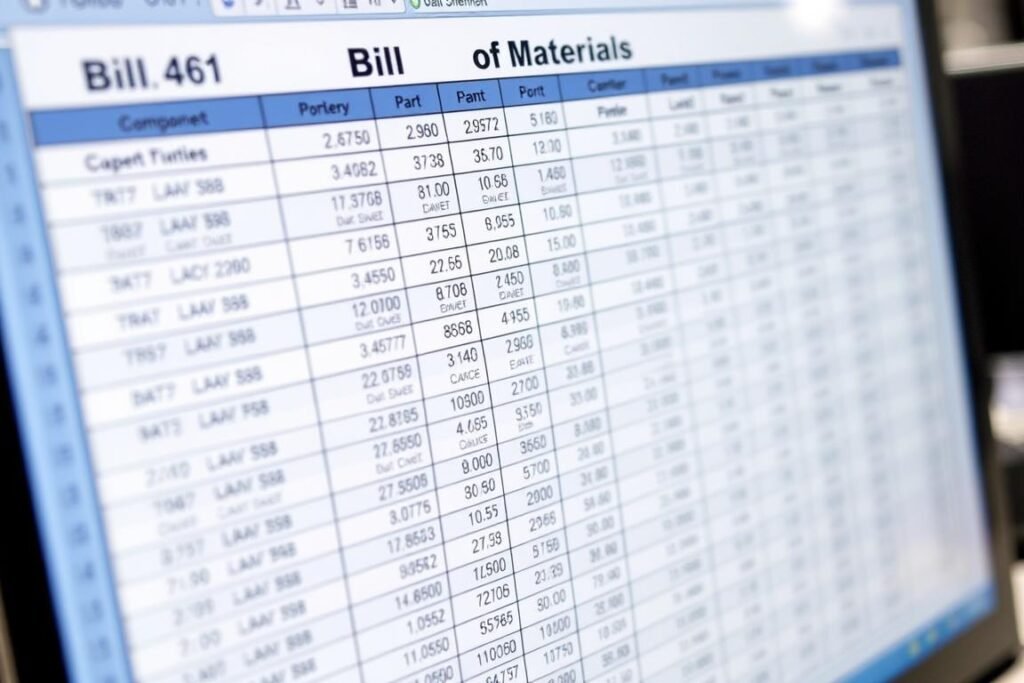
Manufacturing Requirements
| Checklist Item | Why It Matters |
| Production volume and schedule | Affects pricing tiers, component purchasing strategy, and production line allocation |
| IPC class specification (Class 1, 2, or 3) | Defines quality and reliability standards that directly impact inspection criteria and costs |
| Special process requirements | Identifies needs for conformal coating, potting, underfill, or other special processes that add cost |
| Regulatory compliance requirements | Specifies necessary certifications (RoHS, REACH, UL, etc.) that affect material selection and documentation |
Testing and Quality Requirements
| Checklist Item | Why It Matters |
| Testing requirements | Defines needed tests (AOI, X-ray, ICT, functional) that impact equipment setup and testing time |
| Test specifications and procedures | Provides clear pass/fail criteria and test methodologies to ensure consistent quality verification |
| First Article Inspection requirements | Establishes validation process for initial production units before full production approval |

Download Our Complete RFQ Checklist Template
Save time and ensure nothing is missed with our professionally designed RFQ template. This Excel-based tool includes all the elements covered in this guide plus additional fields for specialized manufacturing requirements.
5 Best Practices for Optimizing Your RFQ Process
Beyond including all necessary information, these best practices will help you streamline your RFQ process and build better relationships with your manufacturing partners.
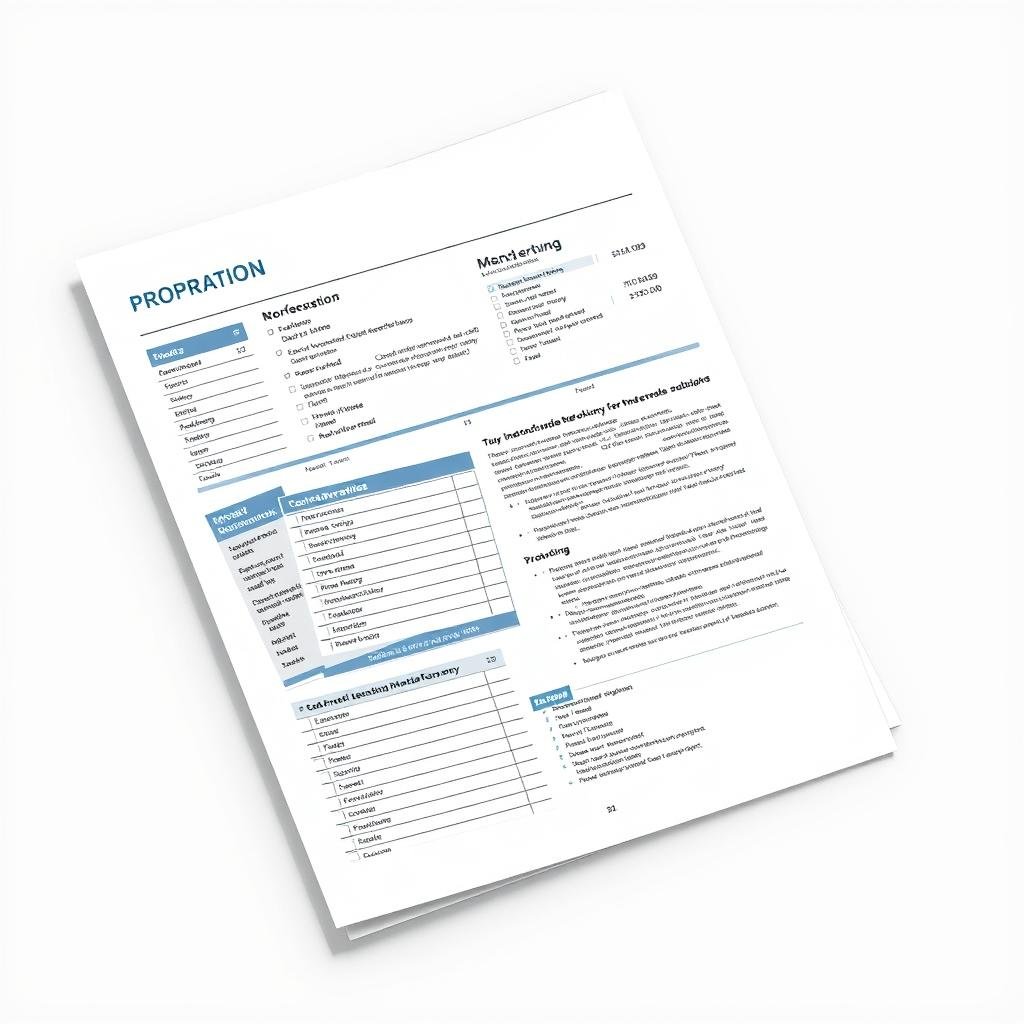
1. Standardize Your RFQ Format
Create a consistent template that your team uses for all RFQs. This helps ensure nothing is missed and makes it easier for manufacturers to find information quickly. Include clear section headers and organize information logically from general project details to specific technical requirements.
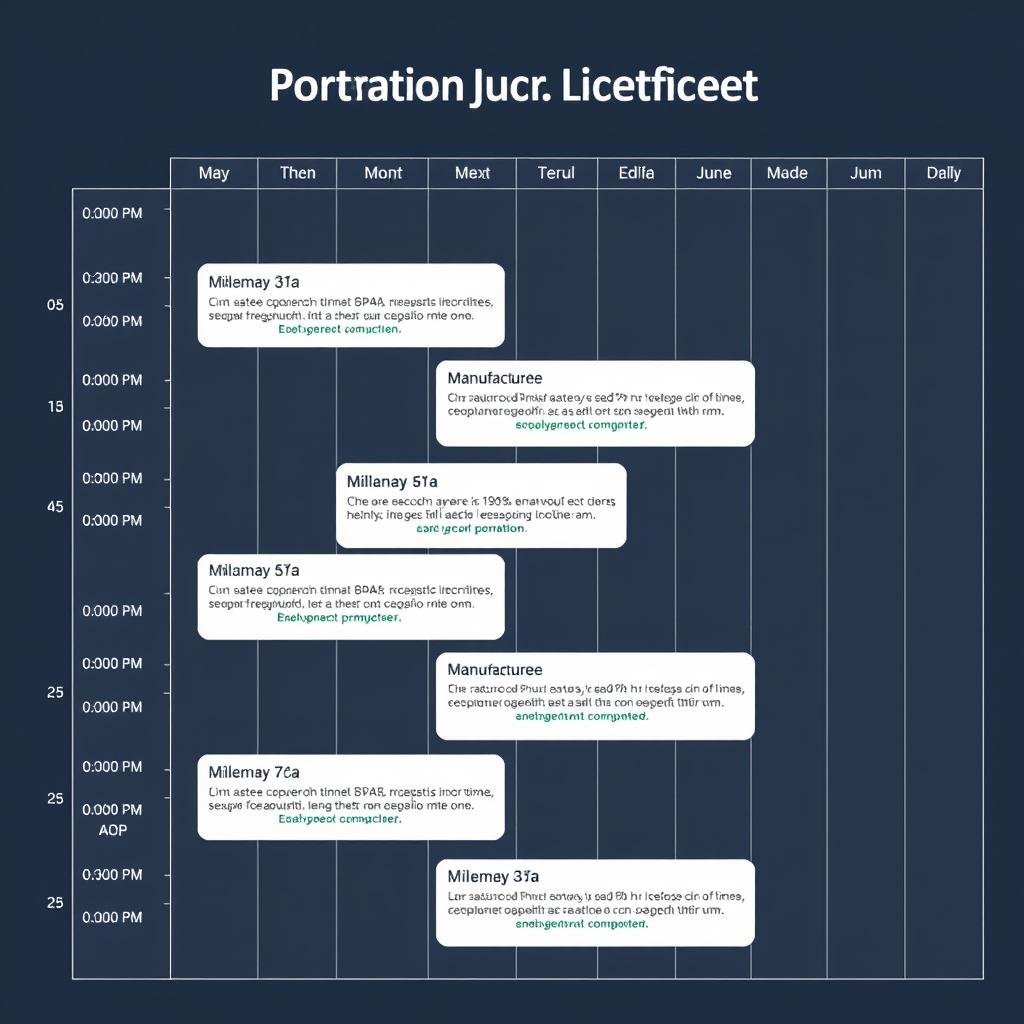
2. Clarify Lead Time Expectations
Explicitly state your required delivery timeline and whether you need prototypes before production. This helps manufacturers determine if they can meet your schedule and may influence their component sourcing strategy. Be realistic about timeframes, especially for complex assemblies or during component shortages.

3. Pre-Qualify Manufacturers
Before sending detailed RFQs, issue a brief Request for Information (RFI) to potential partners to confirm they have the capabilities your project requires. This saves time by ensuring you only send comprehensive RFQs to qualified manufacturers who can meet your specific needs.

4. Protect Your Intellectual Property
Always have manufacturers sign a Non-Disclosure Agreement (NDA) before sharing detailed design files. Consider watermarking documents and limiting access to sensitive information until you’ve selected your manufacturing partner. For highly proprietary designs, consider splitting the assembly across multiple vendors.

5. Request Itemized Quotes
Ask manufacturers to break down quotes by PCB fabrication, components, assembly, testing, and NRE costs. This transparency helps you identify cost drivers and makes it easier to compare quotes from different vendors. It also provides leverage for negotiation and helps prevent unexpected charges later.
Common RFQ Mistakes to Avoid
Even experienced procurement teams can make these errors when preparing RFQs for PCBA manufacturing. Avoiding these common pitfalls will save time and prevent costly misunderstandings.

RFQ Pitfalls to Avoid
- Incomplete BOM Information – Missing manufacturer part numbers or ambiguous descriptions lead to incorrect component pricing and substitutions
- Vague Testing Requirements – Failing to specify exact test parameters and acceptance criteria results in inadequate quality verification or excessive testing costs
- Unspecified IPC Standards – Not indicating which IPC class (1, 2, or 3) is required leaves quality expectations open to interpretation
- Overlooking Packaging Requirements – Forgetting to specify ESD protection, moisture barrier packaging, or shipping container requirements can damage finished products
- Neglecting to Include Reference Designators – Omitting reference designators in the BOM makes it difficult for manufacturers to verify component placement and quantities
“The most expensive RFQ is the one that has to be revised and resubmitted due to missing information. Every day spent clarifying requirements is a day added to your time-to-market.”
– Experienced Electronics Manufacturing Services Provider
Need Help With Your PCBA Sourcing?
Our team of electronics manufacturing experts can review your RFQ package before submission or help you develop a comprehensive sourcing strategy for your next project.
Conclusion: The Path to Better PCBA Quotes
A well-prepared RFQ is your first step toward a successful PCBA manufacturing project. By following this comprehensive checklist, you’ll provide contract manufacturers with all the information they need to deliver accurate quotes quickly. This not only saves time during the quoting process but also prevents costly misunderstandings and delays during production.
Remember that the most successful electronics manufacturing partnerships are built on clear communication and detailed specifications. Taking the time to prepare thorough RFQs demonstrates professionalism and helps establish you as a knowledgeable customer that manufacturers will prioritize.
Whether you’re sourcing a prototype run or planning high-volume production, this RFQ checklist will help you get more accurate quotes, compare vendors effectively, and ultimately select the right manufacturing partner for your specific needs.

About The Author
Elena Tang
Hi, I’m Elena Tang, founder of ESPCBA. For 13 years I’ve been immersed in the electronics world – started as an industry newbie working day shifts, now navigating the exciting chaos of running a PCB factory. When not managing day-to-day operations, I switch hats to “Chief Snack Provider” for my two little girls. Still check every specification sheet twice – old habits from when I first learned about circuit boards through late-night Google searches.
